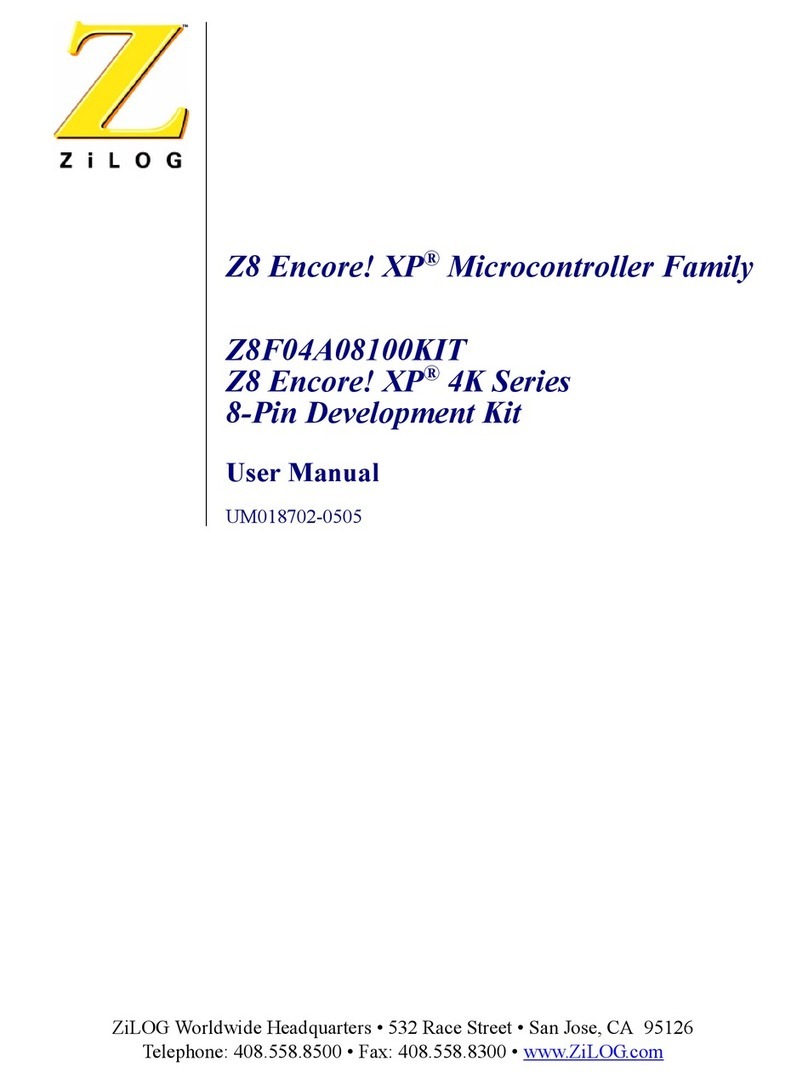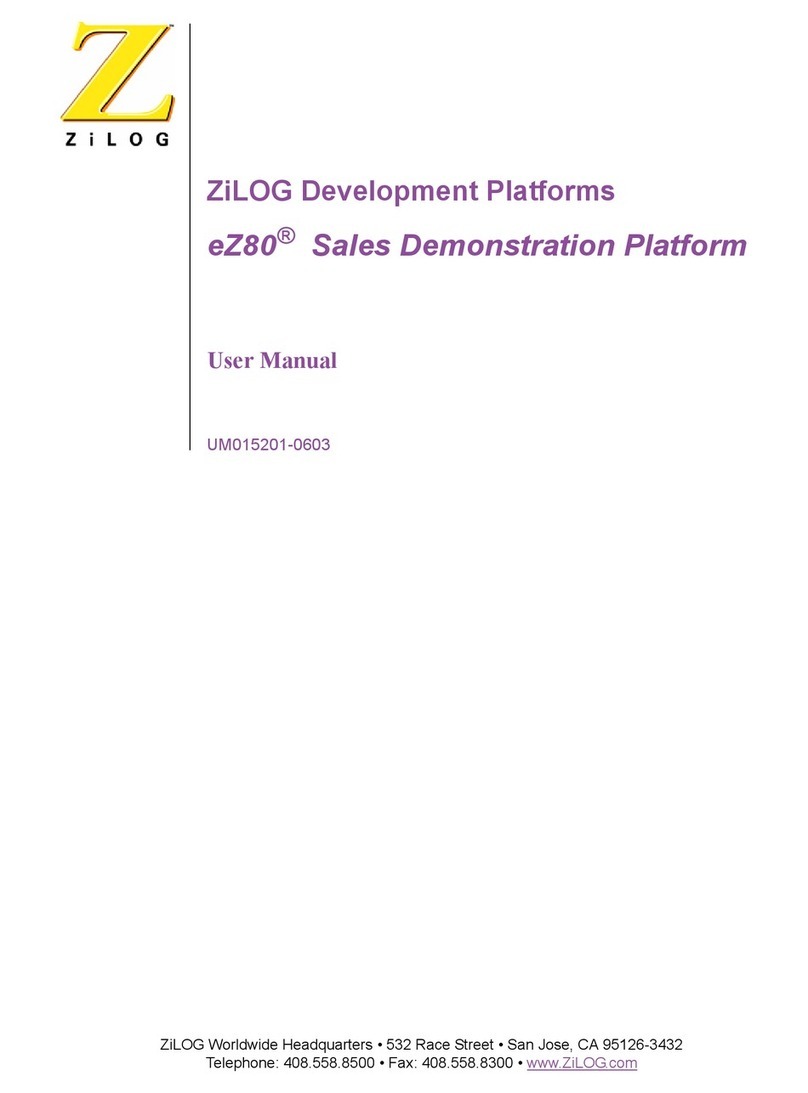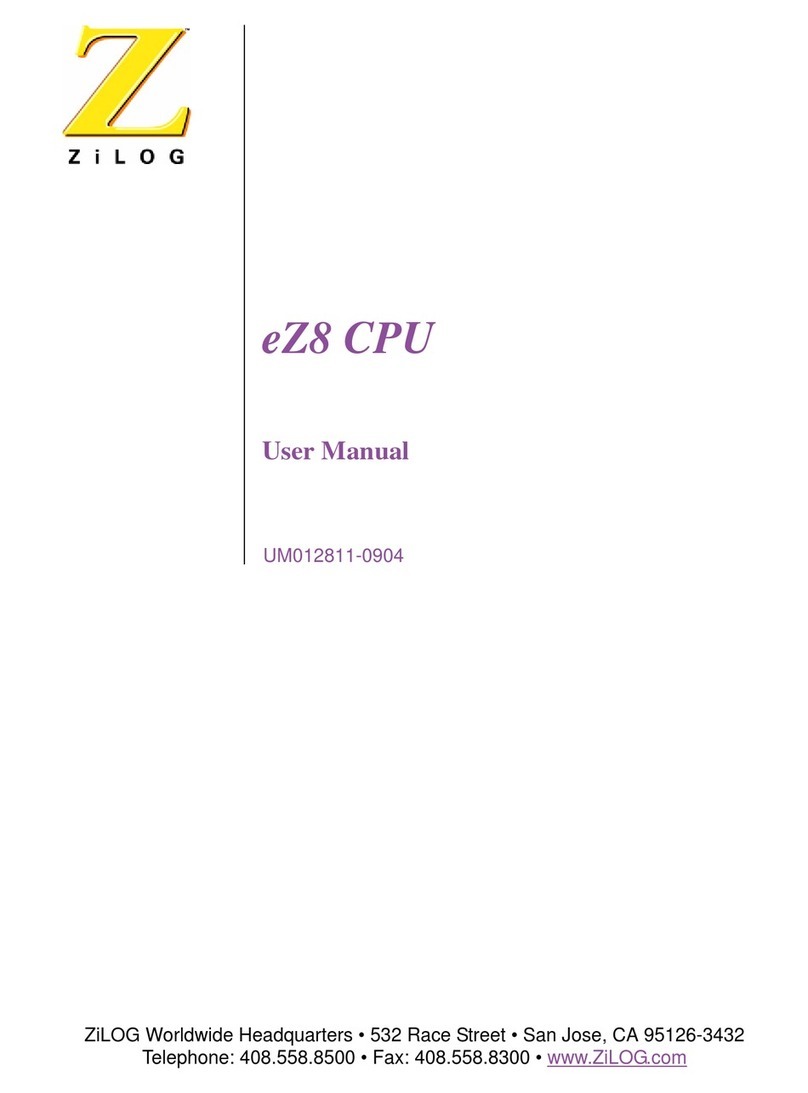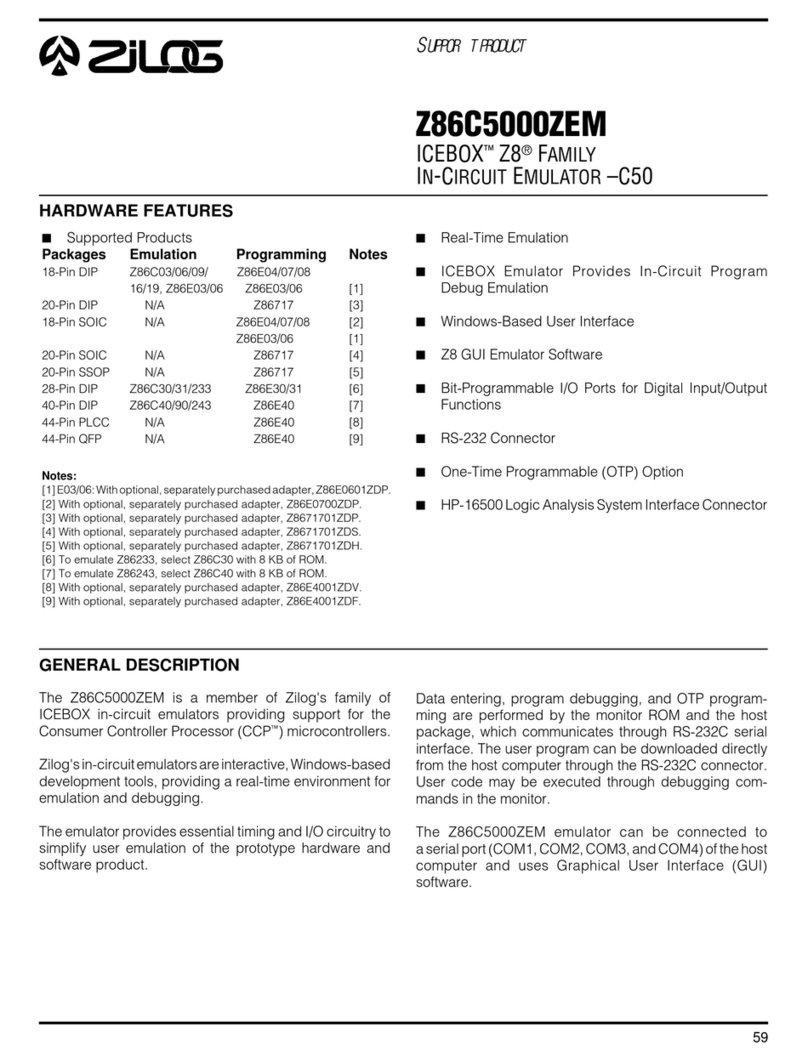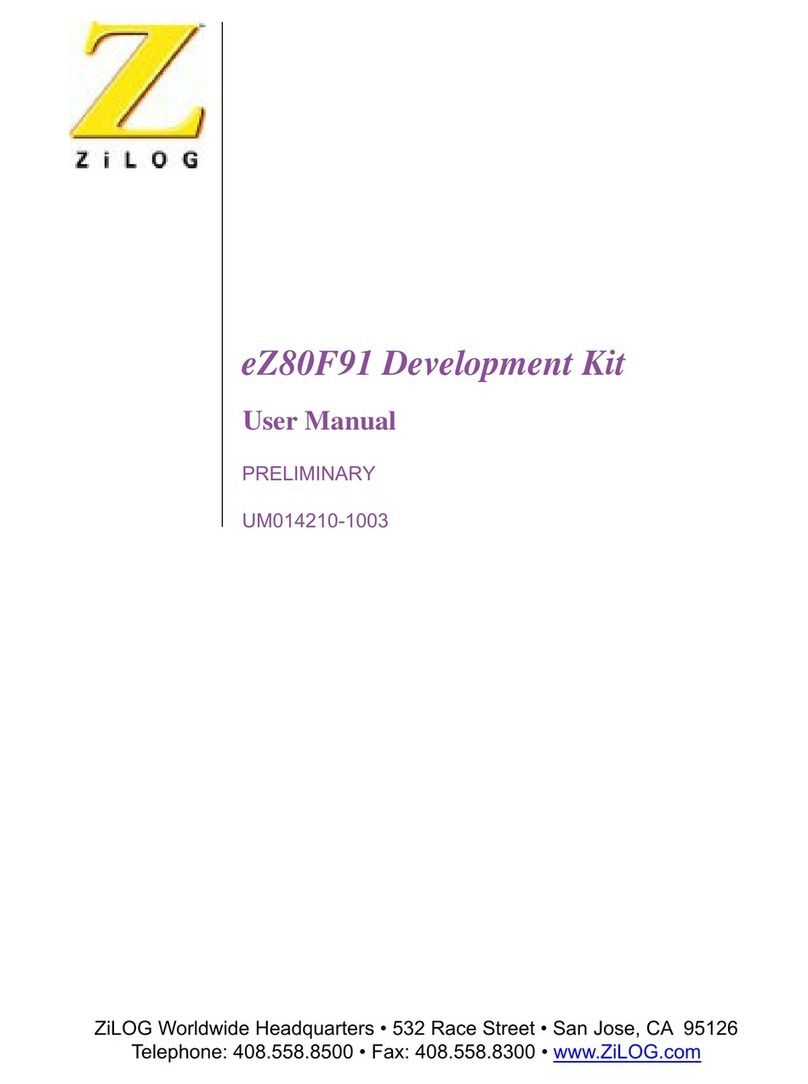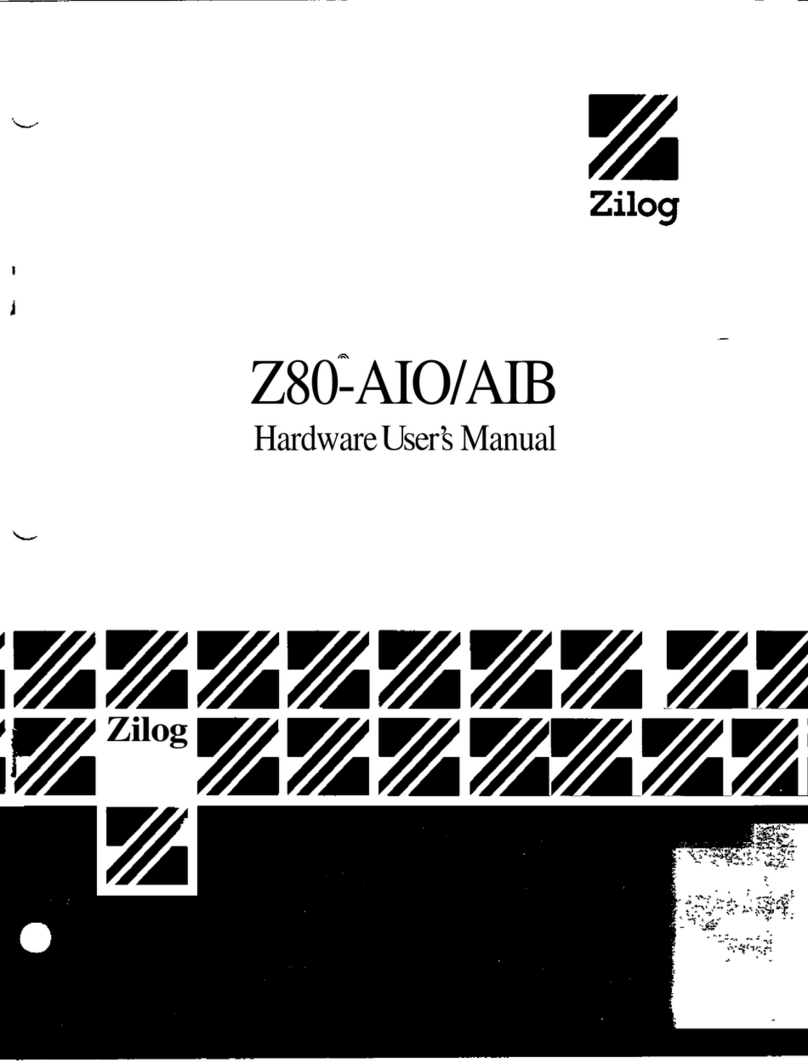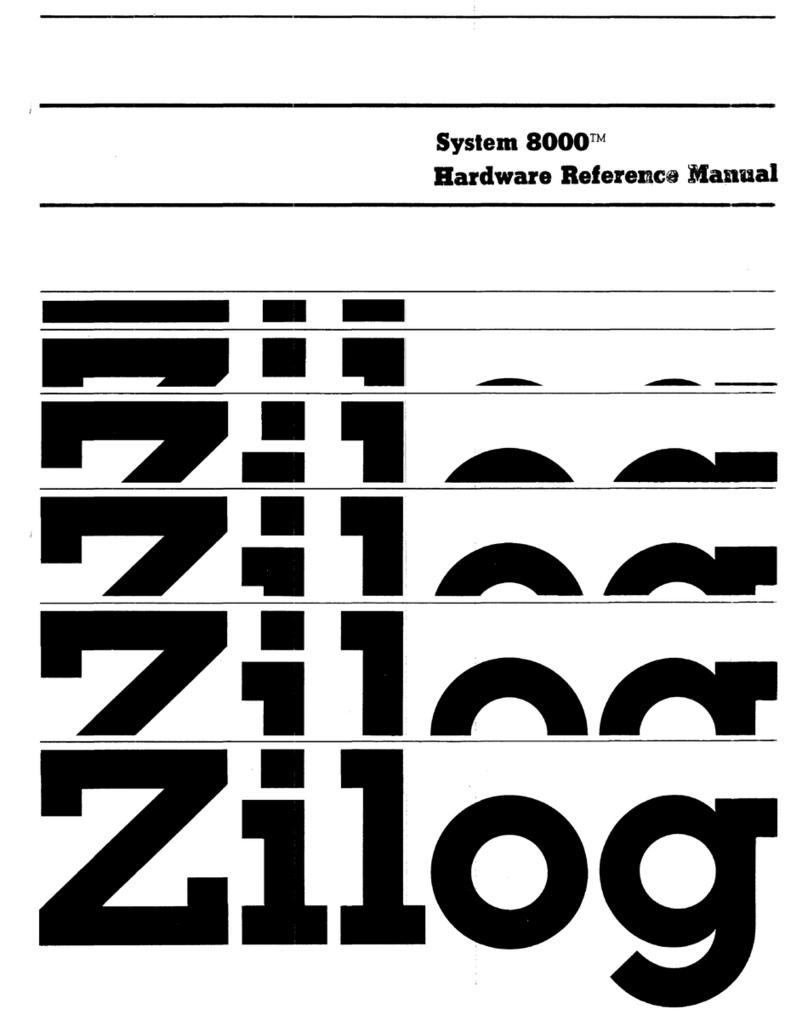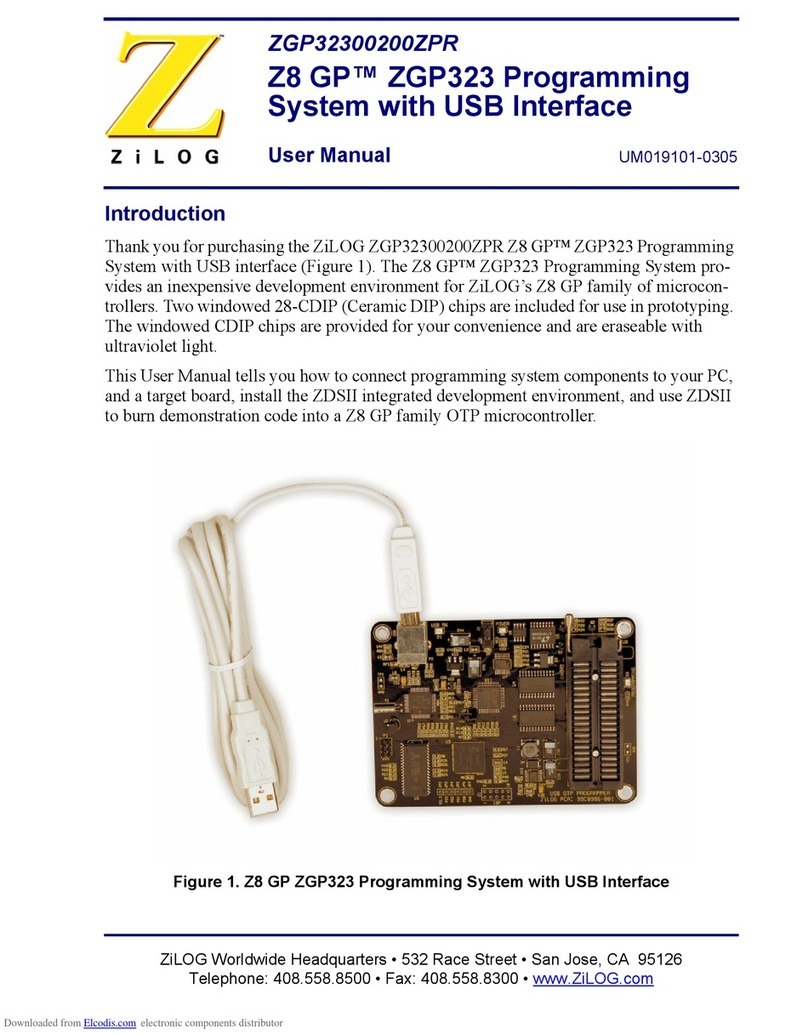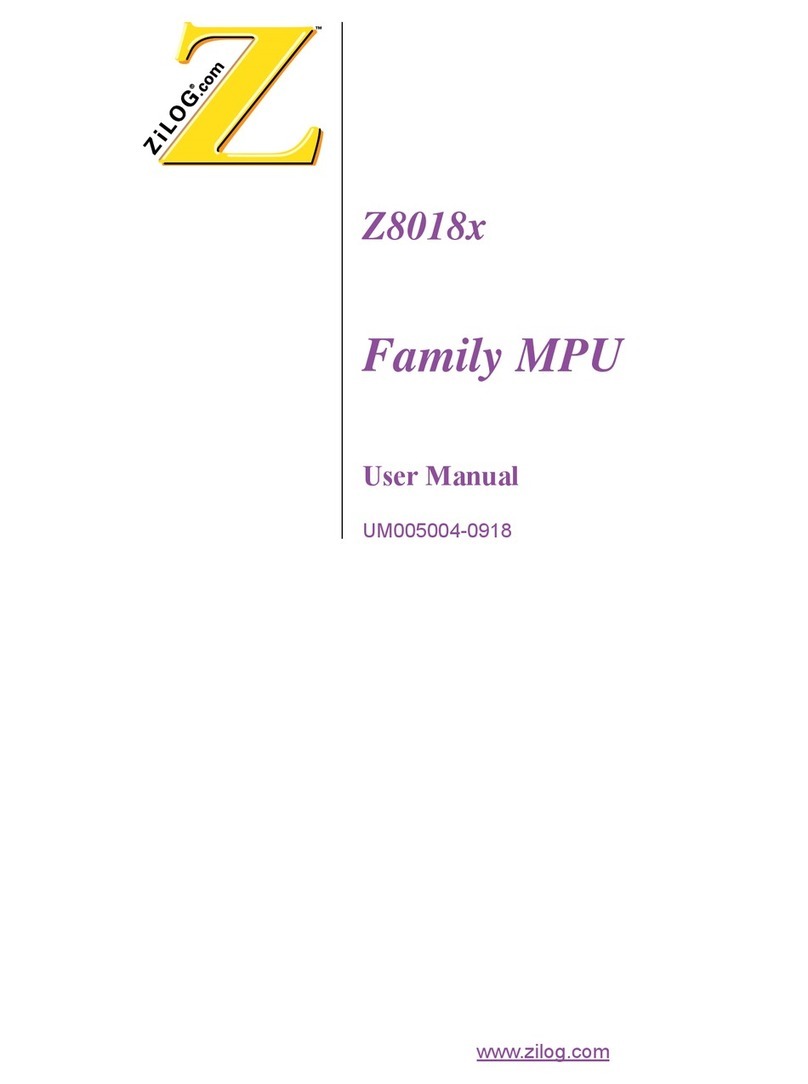Section I discusses Z-80 hardware. The architecture, interface sig-
nals, and timing are discussed in the first two chapters. Addressing
modes and instructions are covered in the next two chapters; both
addressing and instruction repertoire are fairly easily grouped and
explained, although they may appear confusing at first glance. The
effect of arithmetic operations and other operations on CPU flags is
presented in Chapter 6. The powerful interrupt sequences of the
Z-80 are discussed in the next chapter. Chapter 8 describes interfac-
ing examples of I/O and memory devices.
Section II describes Z-80 software. A representative Z-80 assembler
program is introduced in the first chapter of the section. An assem-
bler is almost a necessity with a microprocessor having such a large
instruction set, but machine language aspects are also covered.
Chapters 10 through 15 present the common programming opera-
tions of moving data, arithmetic operations, shifting and bit opera-
tions, list and table procedures, subroutine use, and I/O functions in
relation to instruction set groups. Many examples of each kind of
operation are provided. The last chapter of the section details some
commonly used subroutines written in Z-80 assembly language.
The third section discusses microcomputers built around the Z-80.
Chapter 17 covers Zilog products including the microcomputer
board products in the Z-80 family and development systems. Four
other Z-80 microcomputer manufacturers are described in the last
chapter. Technical Design Labs, Inc., Cromemco, Inc., The Digital
Group, Inc., and Radio Shack. The hardware and software aspects
of all five manufacturers are presented.
The Z-80 will prove attractive to many users, not only as a succes-
sor to the 8080A, but as a powerful computer in its own right.
The Z-80 will soon have a successor, in this dynamic microcom-
puter development environment, but for the time being it represents
microcomputer "state-of-the-art." The author hopes that the reader
will derive a great deal of benefit from the book and that the Z-80
will solve a few hardware and software implementation problems.
Much credit for this book goes to my wife, Janet, who has solved
my major software implementation problems-manuscript prepara-
tion.
WILLIAM BARDEN, JR.
To Bill and Norma and
the Little Green Onions.
